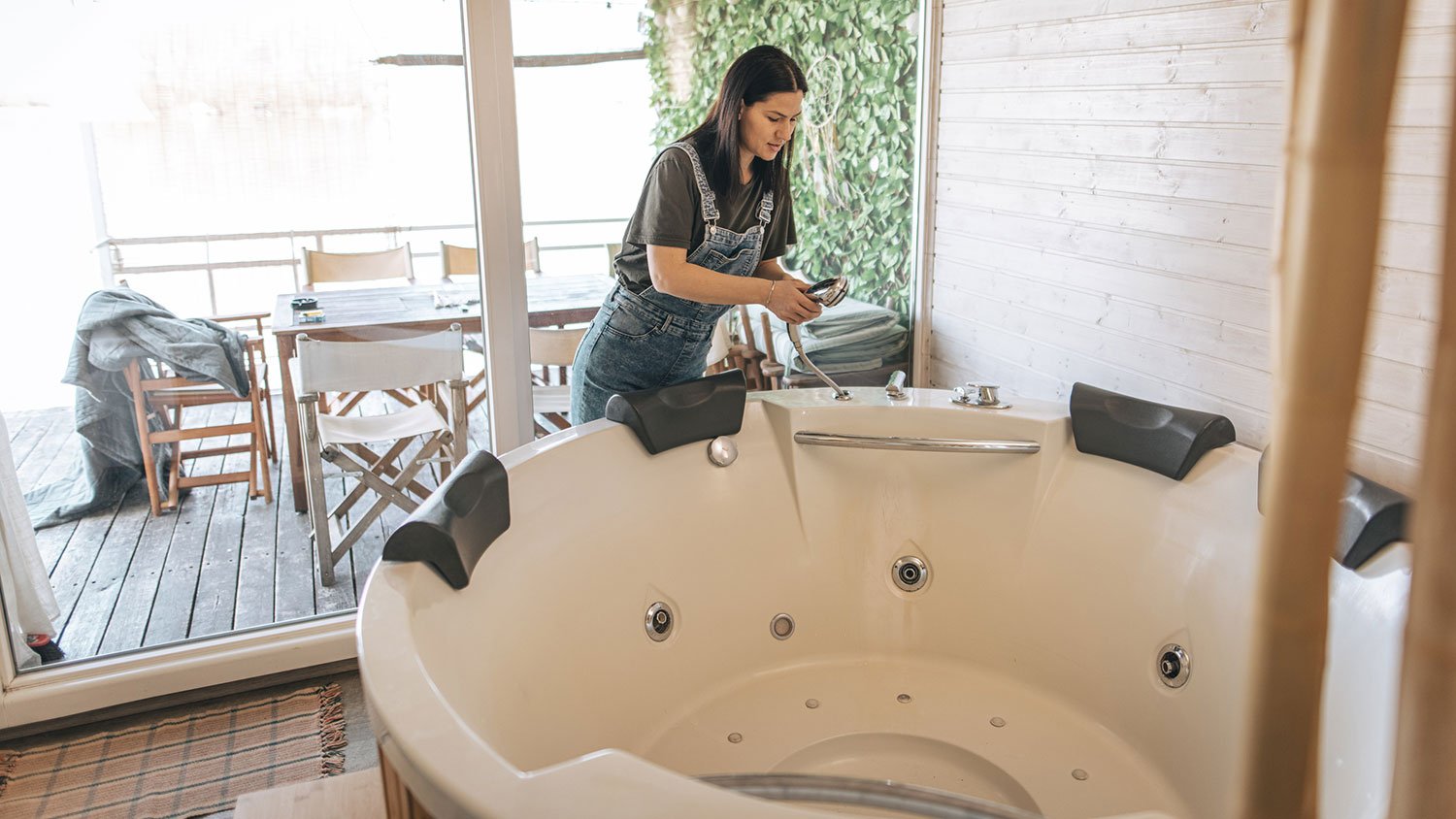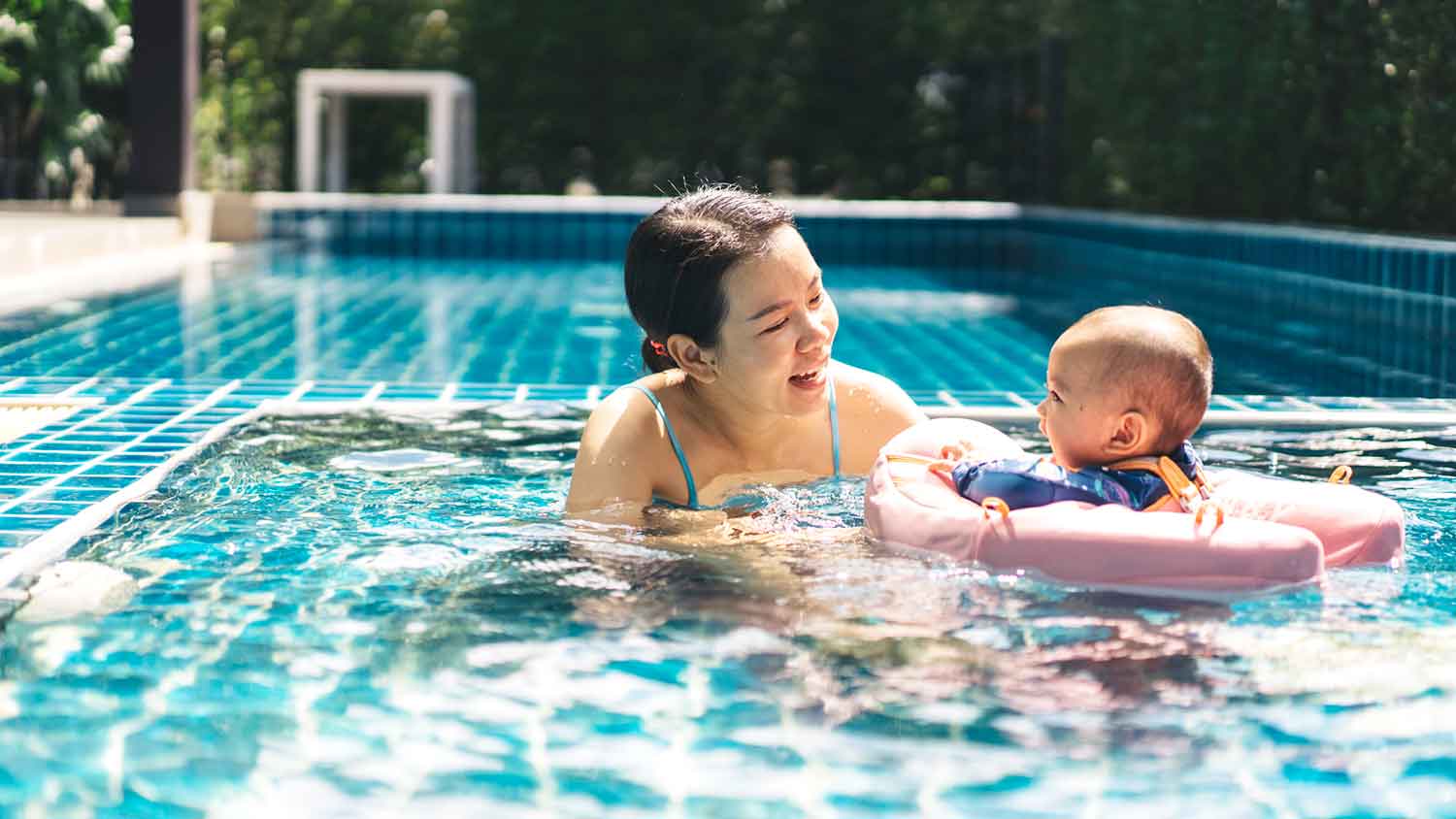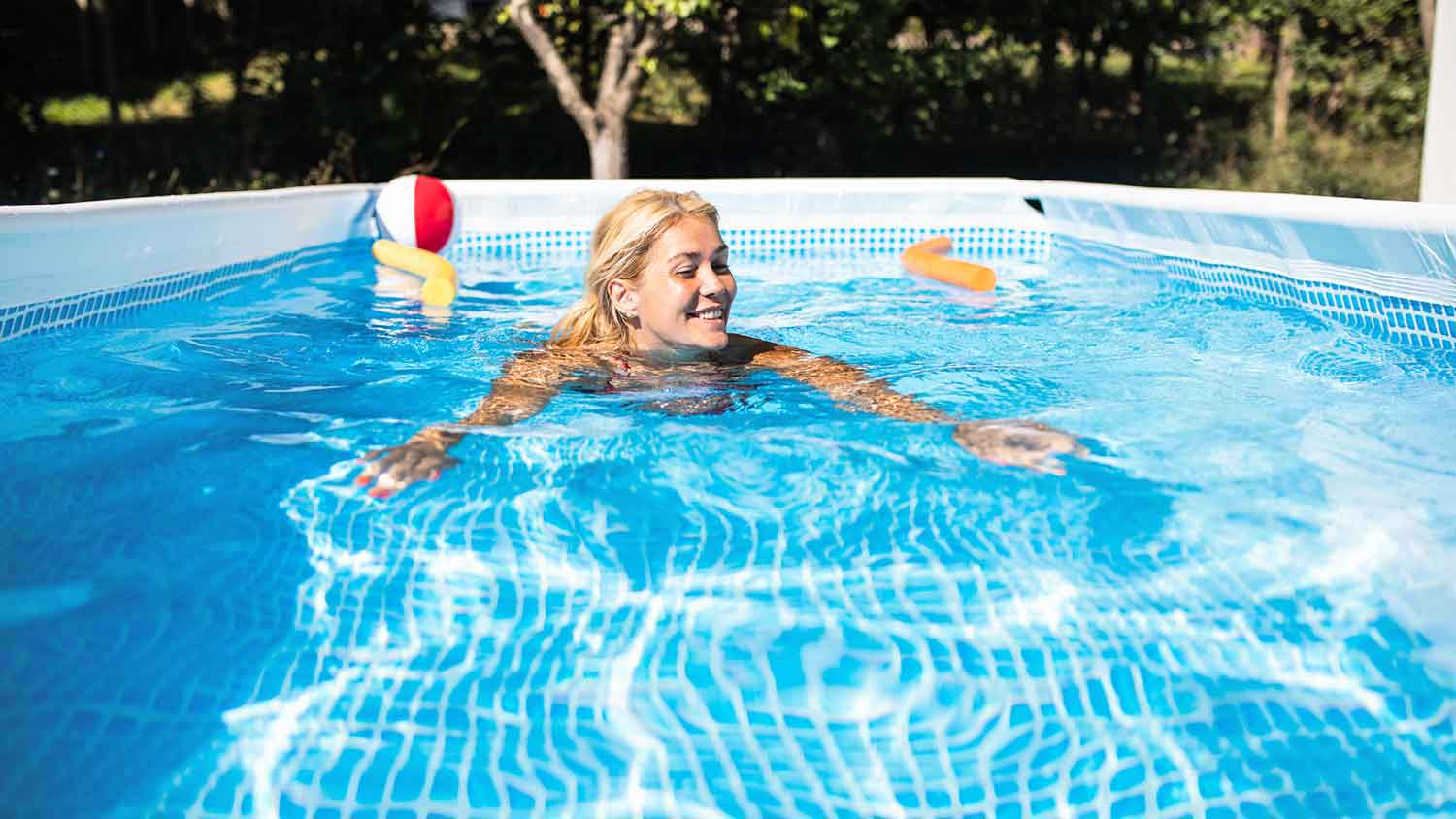5 Hot Tub Health Risks and How to Prevent Them
Don’t let your hot tub get you hot under the collar


The warm, wet environment in a hot tub is perfect for bacteria.
Maintain your hot tub regularly to prevent bacterial overload.
Spend no more than 15 minutes in a hot tub to avoid burns and scalds.
Pregnant people should limit their time in a hot tub to 10 minutes.
If installing a hot tub is on your to-do list, you’re not alone. Hot tubs are a popular addition to any outdoor space. And while a soak in the hot tub may sound like the perfect way to wind down after a stressful day, poorly maintained hot tubs can be a haven for dangerous bacteria. Hot tub health risks include thermal burns and bacterial or parasitic infections. If you’re new to hot tubbing or just need a refresher course, read on to learn how to prevent some of the most common hot tub health hazards.
Bacterial Infections
When not maintained, the hot tub can become one of the germiest places in the home. Mammals aren’t the only creatures who like a warm soak—bacteria thrive in warm, wet conditions like hot tubs. A few bacteria potentially found in dirty hot tub water include:
Legionnaires’ Disease: This form of lung inflammation, or pneumonia, can be found in the steam in a hot tub and is caused by Legionella bacteria.
Hot Tub Lung: Mycobacterium avium complex (MAC), a mycobacteria that can live in soil and water, thrives in moist environments.
Hot Tub Rash: Pseudomonas aeruginosa is a bacteria that can be found in poorly maintained hot tubs and contaminated water.
Maintaining the proper chemical balance is essential to keeping your hot tub safe and free from dangerous bacteria. Still, you also need to give it a proper cleaning every once in a while, which means draining and refilling the tub. Showering after a hot tub session is an additional precaution.
Hot Tub Burns
People are burned more frequently by water than by fire, and sitting in an overheated hot tub for an extended period can result in painful burns and scalds if you aren’t careful. To avoid this uncomfortable situation, ensure your hot tub is never hotter than 104 degrees Fahrenheit, and limit your hot tub sessions to no more than 15 minutes.
Illness Caused by Parasites
Parasites can be present in hot tub water—along with water in swimming pools, lakes, and even the ocean—and are one cause of recreational water illnesses (RWIs). Diarrhea is a common symptom of an illness caused by a parasite, often Cryptosporidium and Giardia intestinalis, that can be found in poorly maintained hot tub water. Some parasites can live in moist environments despite the presence of chlorine.
Pregnancy Complications
The American College of Obstetricians and Gynecologists (ACOG) recommends that pregnant women never allow their body temperature to rise above 102.2 degrees Fahrenheit and limit their time in hot tubs to no more than 10 minutes. The Centers for Disease Control and Prevention (CDC) adds that pregnant women should consult their doctor before using a hot tub, especially during the first trimester. You may also want to lower the water temperature, or skip the hot tub altogether.
Heart Problems or Diabetes Complications
Take extra precautions before getting into the health tub if you have heart problems or diabetes. This can especially affect older adults over 70 years old who struggle with lower blood pressure. If you have diabetes, pay special attention to your feet since it can cause decreased sensation in the feet and lower extremities. If the water is too hot and you don’t realize it, you can risk burns.
The Consumer Product Safety Commission (CPSC) states that people with heart disease, circulatory problems, and diabetes should speak with their doctor before taking a soak in a hot tub. If a physician gives the stamp of approval, then keeping the water at a lower temperature and limiting sessions is a smart move.
How to Drain and Clean Your Hot Tub

Not only do hot tubs need to have the correct amount of chemicals added regularly, but they also need to be drained and refilled on a set schedule. Drain your spa at least every three to four months, but depending on the size and use, you may need to drain your hot tub more often.
The easiest way to determine a schedule for draining your hot tub is to do a little quick math. Divide the number of gallons of water in your hot tub by the number of users. Lastly, divide your result by three. The result is the number of days you can go before draining your hot tub again.
So, if you have a 200-gallon tub that two people regularly use, divide 200 by two to get 100, then divide 100 by three to get 33.3. That means you should drain and refill your hot tub about once a month to keep water at peak cleanliness.
To drain and clean your hot tub:
Disconnect your hot tub from the power source.
Drain according to the manufacturer's instructions. Check your owner’s manual or manufacturer's website to learn how to drain your specific model.
Spray inside the tub with specially formulated hot tub cleaner to cut through grime and buildup. Regular surface cleaners are not suitable for hot tub cleaning since they aren’t pH neutral and could negatively impact water quality. Gently wipe away grime with a cloth or soft bristle brush.
Rinse.
Remove filters and spray to remove dirt and buildup. If your filters have been in use for one year or more, replace them with new filters.
Refill the hot tub.
Once you clean your hot tub and refill it with new water, it’s time to add the chemicals that keep your hot tub safe. Add bromine or chlorine and check levels with test strips. Add sanitizer or shock as necessary, and adjust your pH according to the manufacturer’s instructions. You can also hire a hot tub installer near you to come and maintain your hot tub periodically.

Hot Tub Safety Tips for Everyone
If you own a hot tub, it’s imperative to follow a few tips to keep everyone safe and allow them to enjoy the relaxing benefits a hot tub offers.
Drain the hot tub regularly and use hot tub cleaners to keep the hot tub sanitary.
Check the chemical balance and use a kit to raise or lower alkalinity in your hot tub and pH when necessary.
Clean the hot tub filters monthly.
Skim the surface before use to remove any leaves, sticks, or bugs.
Only stay in the hot tub for the recommended amount of time.
Rinse before hopping in and after getting out.
Kristi Pahr contributed to this piece.















